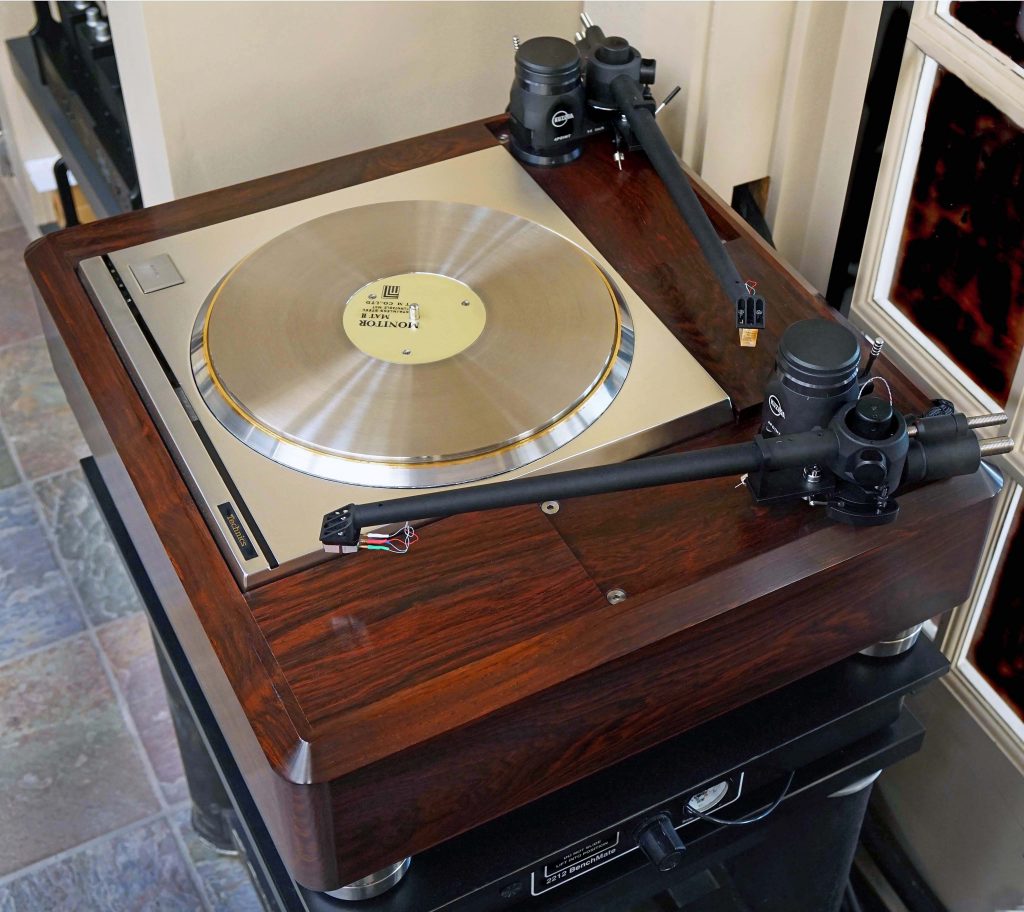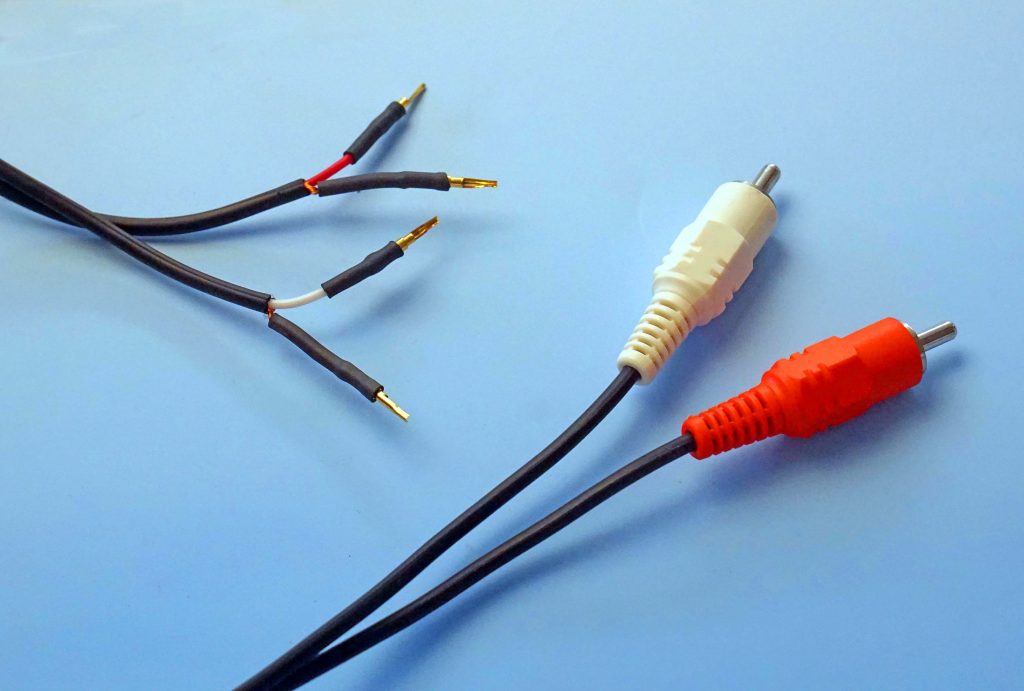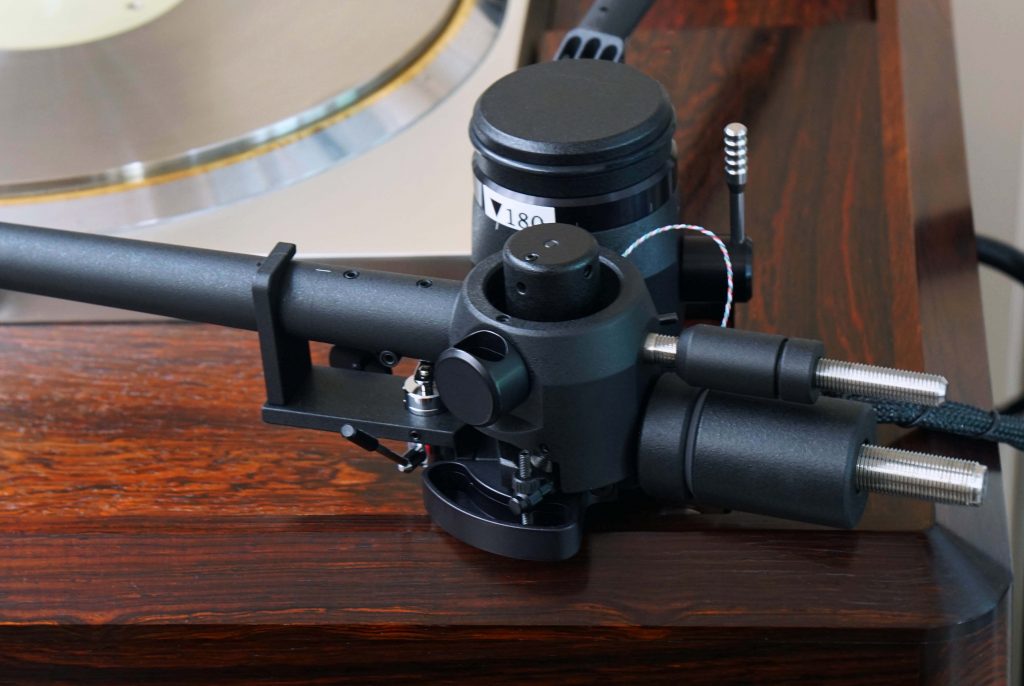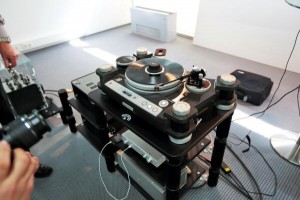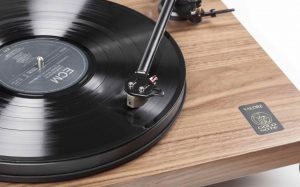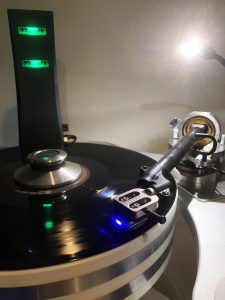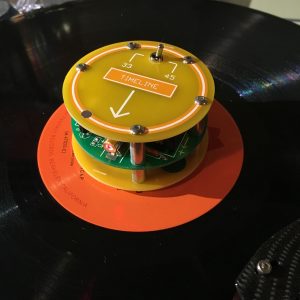Albert Porter owns www.porterhouseaudio.com and features products from Allnic Audio, Stahl~Tek, Purist Audio Design, Koetsu cartridges, Airtight cartridges, Porter Ports, Stillpoints, and custom Custom Analog/Digital components. He does not represent any turntable arms or turntables.
I've owned a turntable in one form or another since my preteen years. I clearly remember the excitement of picking out a record, cueing the tonearm and being moved by the music. Back then I didn't give much thought as to how it all worked, only that it was wonderful.
I discovered high end audio about the time I graduated from college. The store I visited became a second home, I was there two or three times a week until finally the owner ask if I wanted to work there. Is that a joke, sit and listen to music all day and get paid?
Of course I accepted, I worked there for several years, it was a great experience helping people, learning about the equipment and in the process about new music. It was fairly common for people to bring in their favorite LP and as I played it on one of our setups, I was able to compare their reaction with my own.
Our equipment was some of the best available at that time, McIntosh, Marantz, Electro Voice, Ampex, Thorens, Kenwood, Ortofon, SME, Bozak, Stanton, Acoustic Research, and KLH. I will never forget the KLH Model 9 speakers we had in the big room. I was amazed by their performance and marveled at the technology for that time.
All of this had a profound effect on me. My first high end purchase was a Thorens TD124 turntable. I believed a high quality turntable was not only the heart of the system, it would help protect my record library. After I recovered from paying off the Thorens I opted for an Ortofon RMG-212 tonearm and Ortofon SPU moving coil cartridge. Pretty much top tier in that day and still praised by many folks today. I'm still proud of those decision, records I purchased back then still play well. Some of these would be quite difficult to replace today.
A lot of years have passed, I've owned more than twenty turntables and an even greater number of tonearms. Vinyl records remain my favorite music media and to set the highest performance standard, I have a custom restored Studer A810 open reel tape machine. A turntable that can rival the performance of a duplicate master tape is the ultimate goal. In my experience a top quality tape will out perform any media available to us common folks and comes as close to perfection as we can get, aside from live music.
Performance of vinyl playback depends on the entire chain, including the turntable, tonearm, and cartridge. Often overlooked but equally important are isolation, record weight or clamp and turntable mat. These details work with or against turntable performance depending on what you choose. It's a system within our system and absolutely everything matters because it's the source.
For reference, my review and opinion of the Kuzma 4 Point 14" is based on experience with tonearms I've owned or had on loan for extended periods of time. A few of these in no particular order were: SME 3009, Micro Seiki MAX, Walker Black Diamond Proscenium, Naim Aro, Audio Craft AC-4400, Eminent Technology 2, Versa Dynamics 1.2, Ortofon RMG 212, Graham Model 2, Durand Talea, Graham Phantom, Wheaton, Air Tangent 10B, Primary Control 12", Reed 2A, Technics EPA 500, Dynavector 505, Breuer Dynamic, SME 312s, and SME V12.
The SME V12 was added to the system in 2012, replacing the SME 312S. The SME V12, until a few months ago remained unchallenged as my reference tonearm. In fact I had two of them mounted on my heavily modified SP10 MK3 turntable with custom plinth so I could do a comparison between cartridges by switching between the two inputs of my phono stage.
I wondered if the SME V12 would ever be displaced. I loved it, it was a remarkable tonearm that stood the test of time against many other arms. That said, I've been attracted to the Kuzma design for some time, not only due to it's unique bearing and splendid industry reputation but also for it's substantial construction.
When I ordered my Kuzma I opted for the longer 1.7 meter silver wire with Furutech CF-126 R RCA connectors. Before evaluating any arm I always perform an initial break in using the same method and device. I apply continuous audio signal from a Digital Analog Converter or CD player output stage for a minimum of 50 hours.
DACs and CD players typically output 2.5 volts or greater. This higher voltage is quicker and more thorough at achieving break in than a phono cartridge. Plus, once set up and put into play there is no need to tend to it.
If you wish to duplicate this device, start with a cheap pair of RCA cables and cut off left and right channel RCAs on one end. Next, solder four small copper pins that allow connection to the cartridge clips in the headshell. The remaining end with intact RCA connectors plugs into a DAC or CD output stage. The circuit is complete once Kuzma RCA connectors are plugged into the preamp and signal is flowing. I confirm that the connection is functioning by listening and then turn the system off. There is no requirement for equipment to be powered up except the DAC or CD player and the software in play.
Note, only for this break in procedure the tonearm RCA connectors plug into the preamplifier line level input, not the phono stage.
The Kuzma break in process continued 24 hours a day for more than a week. I began with a specialty break in CD and then followed up with a variety of recordings chosen from my music server using repeat play.
After more than 200 hours run in I set up the arm according to instructions supplied by Kuzma and began to listen. I was pleasantly surprised at how open and clean the first LP side sounded.
It was far too early for an opinion, but I was impressed. As I switched from one album to another it became obvious the Kuzma was more than capable, especially when presented with complex material. Lower distortion and greater detail were also proof of its superior tracking ability.
After additional run time with the Air Tight Opus cartridge I noticed the Kuzma was throwing a wider sound stage and within that stage, more clearly defined instruments and voices. All of these advantages tempted me at this early stage to proclaim Kuzma my new reference, but an even greater surprise was still in store.
So superior is the Kuzma 14" ability to express dynamics, I only fully realized to what degree after long term listening with a variety of recordings. My library, like many of us contain a few LPs prized for their musical content but flawed in one way or another.
One such problem is a track recorded at very high sound pressure levels. Peaks within this high SPL sometimes present as a clipping or compression. Over time I've accepted this as a problem without a solution. Often a problem that has persisted not just with a particular LP, but in some cases in two or more copies.
When a group of us listened together this flaw was frequently interpreted as an over driven microphone or over saturated tape. Whatever verbal term used to describe this error, it became an accepted part of that recording. Cleaning with best methods and great attention to adjustments did not always resolve the problem and this continued with multiple tonearms and cartridges, in some cases for many years.
That changed once the Kuzma 4 Point 14" was set up to perfection, at which point these problems were rendered less obvious and in some cases were resolved completely.
The best way I can describe this, I am now getting greater dynamic range with peaks that are not only louder but I'm also hearing an improvement in resolution within that dynamic. This higher peak sound pressure level replaces a previously compressed, clipped or distorted portion of that recording. This improvement is unique, something I've never encountered to this extent with any other tonearm. It sometimes requires long term listening to notice because it's either very slight or we've become accustomed to it and have no expectation it can be improved.
I must say here, there are a number of great tonearms and depending how each is set up there will be significant differences how each reproduces music. Some of this is due to the tonearms mass interacting with cartridge compliance and some is the bearing design and even the materials used in the construction.
Regardless, the Kuzma 4 Point renders all points of LP playback equal or better than all that came before it while resolving the compression issue I described. The Kuzma 4 Point 14" hinted at this increased dynamic from the beginning, well before perfect set up was achieved. This initial level of performance held my interest and kept me experimenting and refining while accumulating additional break in with one or another of my cartridges.
I've concluded this Kuzma sets a new standard beyond any tonearm I know of. Of course I have not heard every tonearm made but I think the Kuzma 14" would greatly impress anyone who spends time with it, regardless of their decision to own it or not.
What makes the Kuzma 4 Point 14" so special, perhaps its 2150 gram mass? Obviously heavier than many tonearms I've owned and it managed to extract equally impressive results from both Air Tight Opus and Koetsu Coralstone, two cartridges that vary considerably in design, material and construction.
I believe too there is an advantage in having an unbroken signal from phono cartridge to phono stage. The only solder joints are the cartridge clips and RCA connectors. If I recall correctly this is one of only two tonearms I've owned with so few breaks. Mechanically its 14" length also has an advantage, keeping tracking error at vanishingly low numbers.
I must pause here and add details about final set up. I think it's important I disclose the evolution of my testing, particularly what was changed from where I began and where I ultimately arrived. I went from a very good setup to a perfect set up. The perfect set up is what drove me to write this review it was significant in convincing me of how important this arm is.
I received my Kuzma 4 point 14" on November 17, 2016. Even allowing for the delay required to break in and mount, I spent a long time listening before I wrote anything. In setting up, all pivot tonearms require a solid mounting platform, accurate spindle to pivot distance, careful adjustment of the overhang, azimuth, and tracking force.
A tracking force change of 1/100th of a gram is audible. Fortunately Kuzma makes this an easy task because of it's dual counterweight design. These two sets of counterweights are on threaded rods, one directly above the other. The larger, lower weights are set to basically offset the cartridge mass and if chosen carefully, one can achieve perfect counterbalance very close to the arms pivot point.
In my case I was able to thread the larger counterweight to within a few mm of the pivot, leaving the smaller upper weight the job of fine tracking force adjustment. I found this system not only easy, but highly repeatable during listening tests, due to the small dot engraved on the upper weight.
I set anti skate via the filament loop and counterweight approximately 4 mm from the pivot point. This is a straight forward adjustment not all that different from the earliest anti skate designs. It's simple to adjust and easy to hear and oddly enough my first setting was best, additional anti skate adjustment both plus and minus were of no benefit.
Like other arms, the Kuzma 4 Point 14" is sensitive to overhang, VTA, azimuth, and track force, but this is where this review went off the tracks a bit. I struggled with the idea of including complete details of my set up with this arm since I love it so much. Then again, my ultimate love for the Kuzma came only after experimenting with aftermarket tools and not accepting only the instructions in the Kuzma owners book.
I admit, I don't understand the mechanics of the Kuzma two point template as supplied with the tonearm. Franc Kuzma courteously replied to my countless questions and even though initial set up procedure was followed, it was ultimately not my best result.
I was not able to reach perfect overhang using the two point system. The set up instructions required the two point protractor achieve target point at two null points and insure the cartridge cantilever is parallel at both points to lines provided. This is achieved by loosening the cartridge mount screws and careful twisting. Once the first null point is achieved the protractor is rotated and you set the second null point. It generally requires repeating this several times until both points are as perfect as possible.
Confusing for me, there was no tool to measure spindle to pivot distance and I had no luck checking same with steel rulers or templates. Assuming one does achieve perfect spindle to pivot distance, there is no confirmation by way of the Kuzma template.
I will say the initial set up was good, it kept me focused on the adjustments and encouraged me to continue. Ultimately it was a multiple tool, alternative set up that bonded me to this arm and drove me to write this review.
The aftermarket tools on hand include the UNI from Germany, The Dr. Feickert Analog Protractor NG, Mint Protractor specifically designed for my turntable and Kuzma arm, and a Wally Universal. I have several others but these are the most important to me. I understand each one both in theory and in use and choose according to the situation.
I used the Feickert NG to set the Kuzma to 342mm spindle to pivot specification. In the end this tool was absolutely essential in setting up the Kuzma to perfection. I also followed the Feickert NG instructions for cartridge alignment and then cross checked using the Mint Protractor. These two tools confirmed each other and both were drastically different than what I achieved using the Kuzma two point protractor. Overall I find it easier to use the Mint for that last fraction of a millimeter adjustment because of it's glass surface and the way the markings are done. This is purely personal in that I'm accustomed to it.
I feel guilty being even the least bit critical of the Kuzma two point protractor, and admit my results with it could be a failure on my part to understand and use it correctly. In any case, after using both the Feickert and the Mint Protractor the Kuzma achieved the performance level that prompted this review. The final result is simply stunning, and any reservation I had about performance vanished with this final set up.
Ultimately I was so pleased with the performance of the first Kuzma, I purchased another one March, 2017. In both cases I choose not to use the damping trough or the finger lift.
While on the topic of settings, the ability to adjust VTA with the Kuzma is a breeze. In my case it can be done on the fly. Begin by unlocking the wand to free the mechanism and then rotate the large knob on top, clockwise to lower or counterclockwise to raise the arm. VTA adjustments are audible with every tonearm I've owned but the Kuzma and Triplanar are by far the easiest to set and repeat.
I've settled on a VTA center point and this last image shows how I marked the Kuzma for a 180 gram record. From there it will be easy to raise or lower for thicker or thinner LPs in literally a few seconds. You can also see detail of the Kuzma dual counterweight system that I admire so much.
Kuzma 4 Point 14" Tonearm
Retail: $8995
US Distributor
Elite AV Distribution
PO Box 93896
Los Angeles, CA 90093
323.466.9694 x22
A few of the records used in my evaluation:
Dallas Symphony Orchestra, Rachmaninoff Symphonic Dances, Vocalise, Athena ALSW-10001 (1988).
Etta James And Eddie Cleanhead Vinson, Blues In The Night, Volume One, The Early Show. Fantasy Records (1986).
Felix Laband, Deaf Safari. Compost Records (2015).
Horace Parlan, Speakin' my Piece. Blue Note - Music Matters 45 RPM reissue (2007).
Charlie Haden and Hampton Hawes, As Long as There's Music. Artists House (1978)
The Royal Ballet Gala Performances, Ernest Ansermet, RCA Classic Records reissue
Nirvana, MTV Unplugged in New York Live. David Geffen Company (1994).
Duke Ellington and Ray Brown, This One's For Blanton. Analog Productions 45 RPM reissue. (2005).
Kate Bush, Aerial. EMI (2005).
Charlie Haden, Closeness Duets with Ornate Coleman, Alice Coltrane, Keith Jarrett and Paul Motian. A&M Horizon (1976).
Fiona Apple, Extraordinary Machine. Clean Slate-Epic (2005).
Billie Holiday, Songs for Distingue' Lovers. Classic Records 45 Series Special Single Side Press (1995).
Allen Toussaint, The Bright Mississippi. Nonesuch (2009).
Reiner Chicago Symphony, Rimsky-Korsakoff, Scheherazade. RCA reissue Classic Records (1995).
Albert Porter owns www.porterhouseaudio.com and features products from Allnic Audio, Stahl~Tek, Purist Audio Design, Koetsu cartridges, Airtight cartridges, Porter Ports, Stillpoints, and custom Custom Analog/Digital components. He does not represent any turntable arms or turntables.




